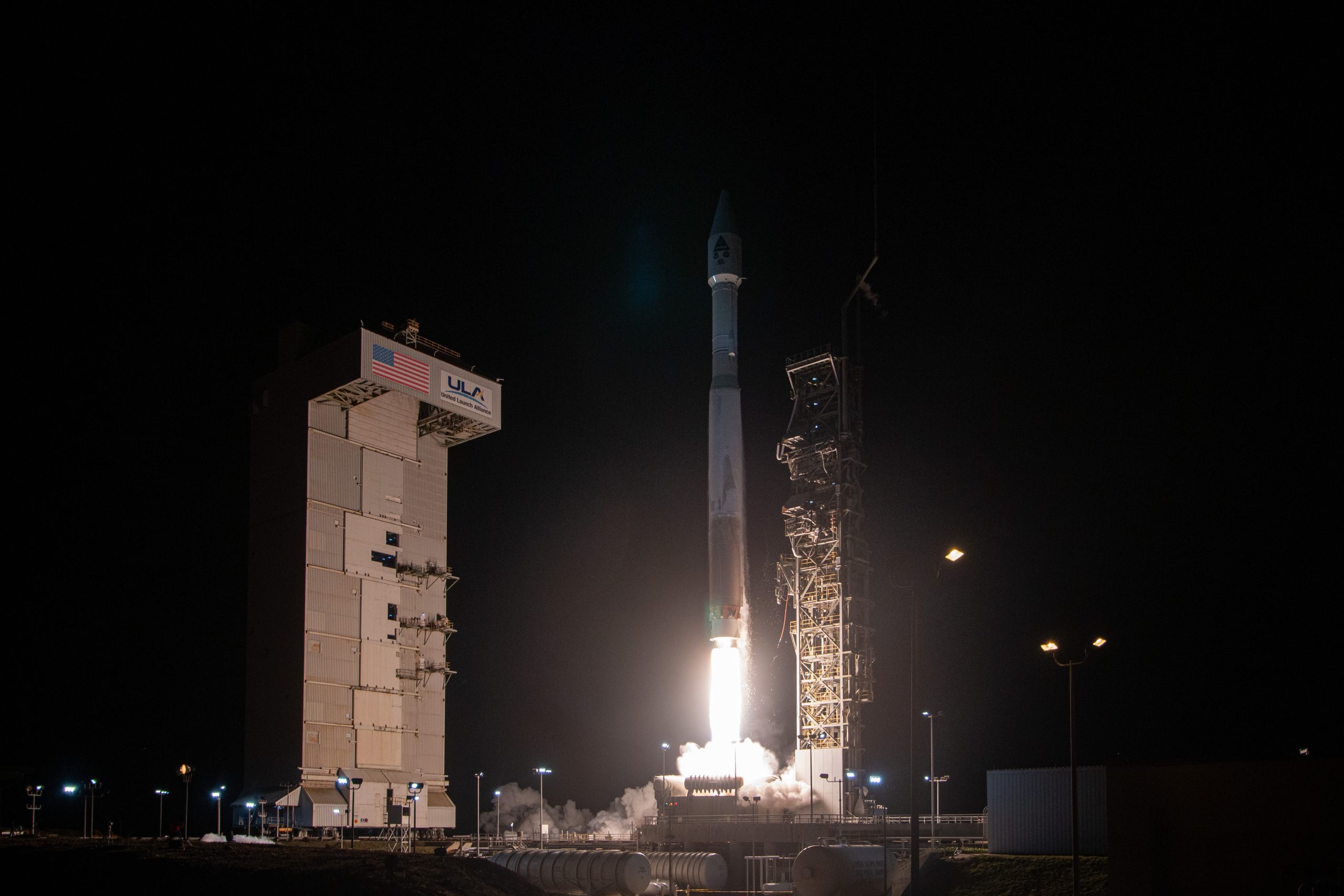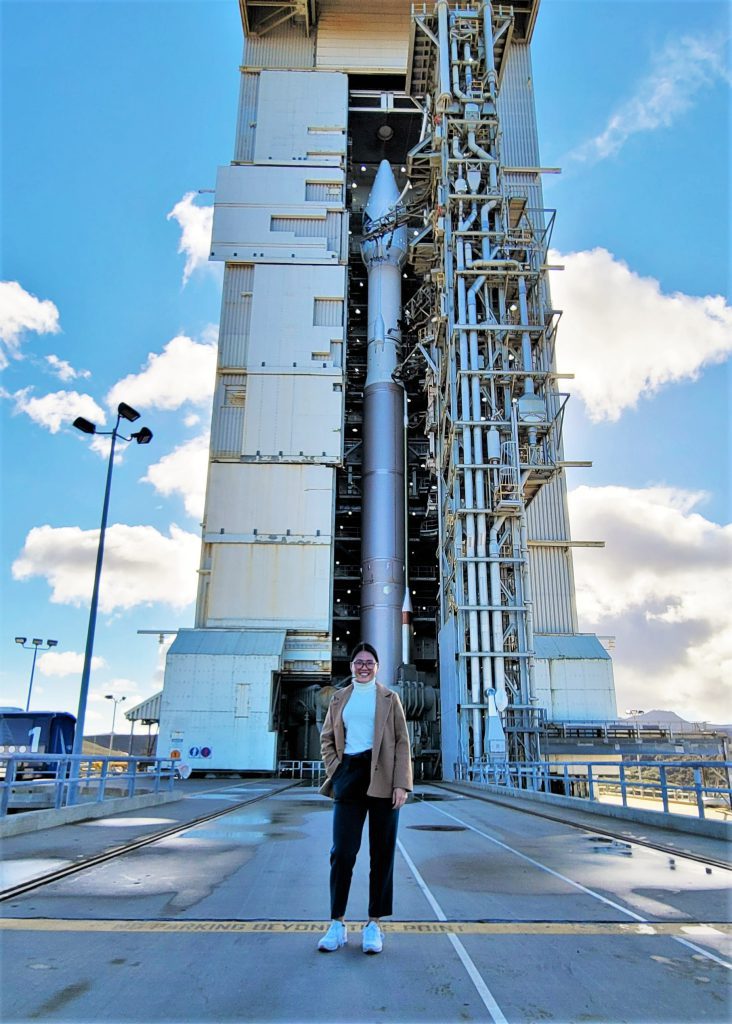
“Launch sequences starting…ranges green…GO Atlas, GO Centaur, GO JPSS-2, T-minus 10, 9, 8 … 3, 2, 1, ignition! And liftoff of Atlas V, carrying JPSS-2…” says NASA’s launch team during the chilly early morning hours of November 10, 2022. JPSS-2, soon to be renamed NOAA-21, will spend the rest of its functional life capturing and transmitting crucial data for weather forecasts, climate records, hurricane predictions, and so much more.
I stand there in the Hawk’s Nest launch viewing area right outside of Vandenberg Space Force Base near Lompoc, CA, watching as NOAA’s JPSS-2 satellite, atop an Atlas V rocket, successfully joins its Joint Polar Satellite System comrades in orbit. While my eyes are trained on the ascending rocket, I can’t help but think “How did I, an invertebrate physiologist by training, end up at a satellite launch?!”
As Knauss Fellowship finalists, we are presented with two paths: one that allows us to delve deeper into a field or topic that we already have expertise in and the other that challenges us to leap outside of our comfort zone and apply ourselves to something new. I chose the latter.
When I applied for the fellowship, I was in the midst of my graduate research – studying the impacts of ocean acidification and warming ocean temperatures on the growth and physiology of larval Pandalus jordani, or pink shrimp. Through this research, I learned the importance of producing robust science and the impactful role of effective science communication. My graduate experience also helped me realize my affinity for communication and desire to learn about the connection between science and policy. These inclinations drew me to the budget analyst position with the Budget Formulation and Communications Division (BFCD) of NOAA’s Budget Office.
When I applied for the fellowship, I was in the midst of my graduate research – studying the impacts of ocean acidification and warming ocean temperatures on the growth and physiology of larval Pandalus jordani, or pink shrimp. Through this research, I learned the importance of producing robust science and the impactful role of effective science communication. My graduate experience also helped me realize my affinity for communication and desire to learn about the connection between science and policy. These inclinations drew me to the budget analyst position with the Budget Formulation and Communications Division (BFCD) of NOAA’s Budget Office.
Let’s take a moment to demystify budget formulation. I, like many of you who are reading this post, knew next to nothing about the federal budget process before I started my role in BFCD. However, now that I have about 10 months of budget formulation experience under my belt, I’ve been pleasantly surprised by how engaging (and fun) the process can be.
When I started with BFCD I learned that communication and customer service have central roles in the formulation of the annual budget. BFCD advocates for NOAA’s programs and products which ultimately helps scientists, managers and programs get the support they need to carry out their missions. To put it plainly, the budget brings proposals to life and turns ideas into tangible products! Sure, there are spreadsheets involved, but so much of what BFCD does revolves around communicating in a timely and effective manner and building relationships with our stakeholders.


In my role as a budget analyst, I’ve contributed to all phases of the budget formulation process, from strategic planning to align NOAA’s programmatic goals with the needs of the nation to advocating for NOAA’s programs to the Department of Commerce, the Office of Management and Budget and Congress. The “Jack of all trades” approach that’s taken in BFCD has allowed me to sharpen my communication skills through a broad range of tasks – eloquently communicating a master’s thesis is one thing but carefully crafting a budget document that could fund critical research or jobs is an art form that I’m slowly getting the hang of.
You’re probably still wondering how exactly I ended up at a satellite launch. When I started this position, I was presented with bountiful opportunities to shadow analysts and cover different portfolios, including NOAA’s National Ocean Service, National Marine Fisheries Service and Office of Oceanic and Atmospheric Research. And in keeping with the theme of accepting new challenges and keeping an open mind, I agreed to tackle the National Environmental Satellite, Data and Information Service portfolio. This role helped me understand NOAA’s satellite constellations and overall mission, ultimately leading me to form a deeper appreciation for the many products and services that NOAA provides. And after reading about the satellites and forming an in-depth view of the resources and work that go into the production of each of these assets, I couldn’t say no when the opportunity arose to see a satellite launch.


As I stand there looking up at the clear moonlit sky, I feel a flood of emotions. I am grateful for the opportunity to be part of this event and thankful that I took on the challenge of leaving my realm of comfort and expertise when I embarked on this fellowship year. In the past 10 months, I’ve honed my communication skills, gained a greater understanding of the federal budget process, and learned where research fits into policymaking and budgets. Ultimately, all of the experiences I’ve had during my Knauss Fellowship and the new knowledge and perspectives I’ve gained have shown me that the sky is the limit when you approach new challenges with an open mind.
Michelle Nguyen
Knauss Fellow
NOAA Budget Office, Budge Formulations & Communications Division


